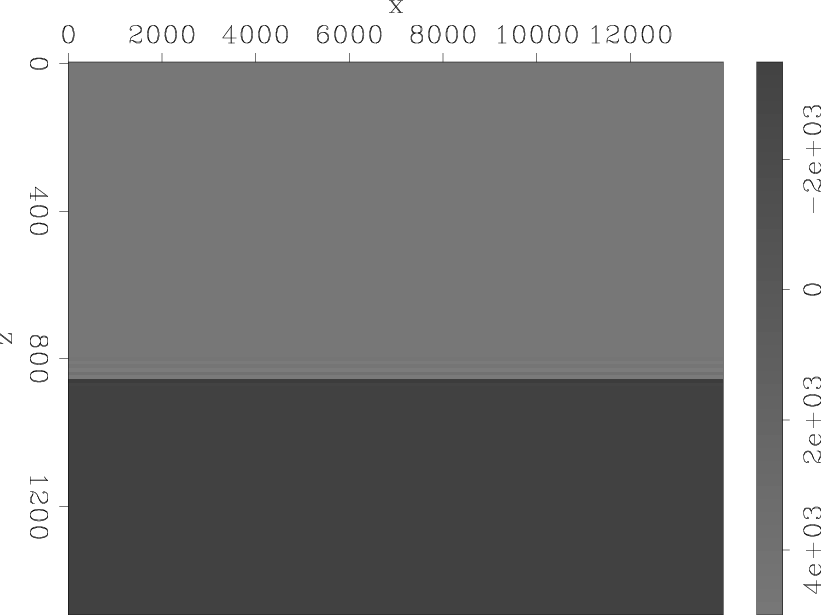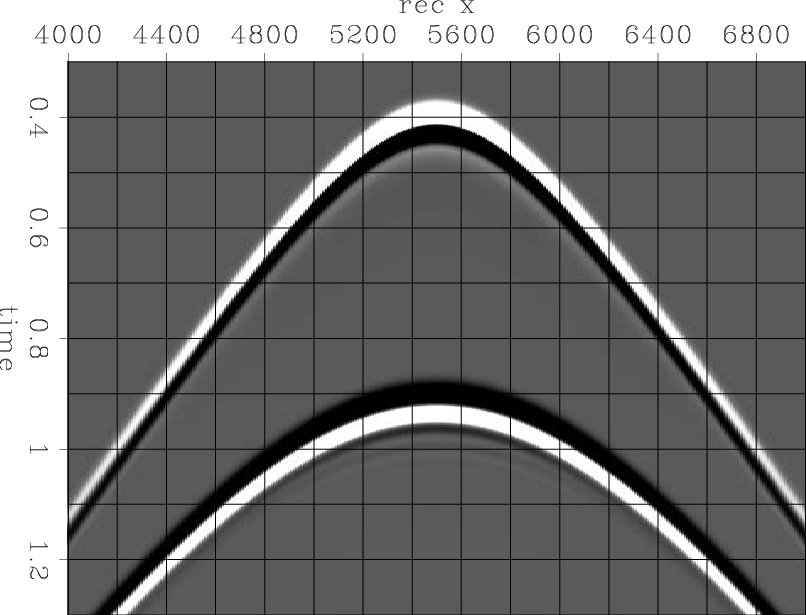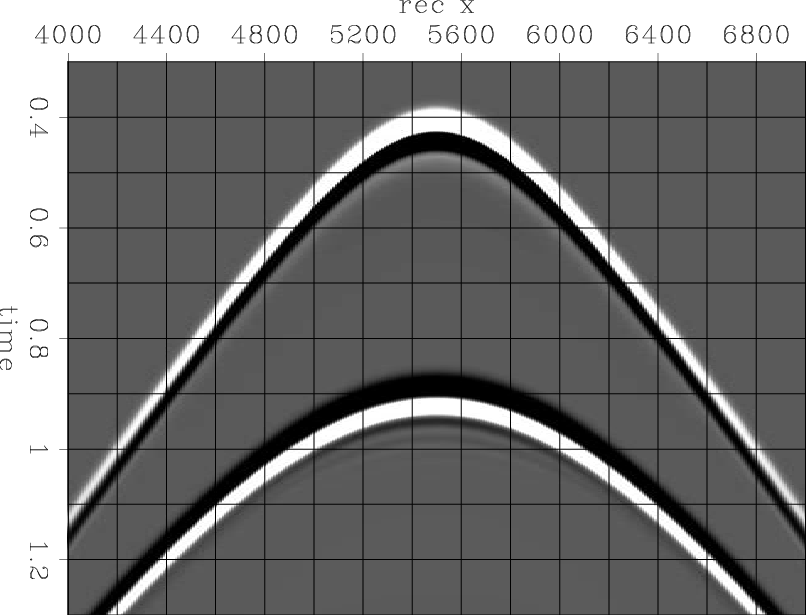|
|
|
|
Reverse Time Migration of up and down going signal for ocean bottom data |
Originally, field ocean-bottom data consists of two measurements, the pressure and the shear waves. However, we limit our synthetic study by using the acoustic wave equation instead of the elastic wave equation. Instead of converting the ![]() and
and  measurements into up- and down-going data, we use the constant density, two-way acoustic wave equation to first generate over/under data, which are measured at two depth levels near the ocean bottom. Next, we convert the over/under data into up-down data using the separation operator
measurements into up- and down-going data, we use the constant density, two-way acoustic wave equation to first generate over/under data, which are measured at two depth levels near the ocean bottom. Next, we convert the over/under data into up-down data using the separation operator  described in the last section.
We use a very simple one-reflector problem. Figure 4(a) shows the velocity model used to generate the synthetic over-under data.
described in the last section.
We use a very simple one-reflector problem. Figure 4(a) shows the velocity model used to generate the synthetic over-under data.




|
|---|
|
velmodel,data1,over-data,under-data
Figure 4. (a) Our simple one reflector velocity model. (b) The data collected at 480 m depth using the two-way acoustic wave equation. (c) The direct arrival and primary reflection of the over data. (d) The direct arrival and the primary reflection of the under data. [CR] |
|
|
One shot is fired at zero depth and ![]() m. Two lines of receivers are placed at 480 m and 500 m depth and span from
m. Two lines of receivers are placed at 480 m and 500 m depth and span from ![]() m to
m to ![]() m with a
m with a ![]() m spacing. The receiver signals are shown in Figure 4(b). The first signal that arrives in time is the direct arrival, which propagates from the source directly downward to the receivers. The second signal is our primary reflection that bounces off the reflector at 800 m depth and returns to the receiver going upward. The third signal is the receiver ghost.
Figure 4(c) and Figure 4(d) show a close up of the direct arrival and primary reflection of the over and the under data collected. Notice that the direct wave arrives sooner in figure 4(c) than in figure 4(d), because the direct arrival is down-going. Similarly, the up-going primary reflection arrives sooner in Figure 4(d) than in Figure 4(c).
m spacing. The receiver signals are shown in Figure 4(b). The first signal that arrives in time is the direct arrival, which propagates from the source directly downward to the receivers. The second signal is our primary reflection that bounces off the reflector at 800 m depth and returns to the receiver going upward. The third signal is the receiver ghost.
Figure 4(c) and Figure 4(d) show a close up of the direct arrival and primary reflection of the over and the under data collected. Notice that the direct wave arrives sooner in figure 4(c) than in figure 4(d), because the direct arrival is down-going. Similarly, the up-going primary reflection arrives sooner in Figure 4(d) than in Figure 4(c).
|
|
|
|
Reverse Time Migration of up and down going signal for ocean bottom data |